The French are known for their distinct taste in food and beverages like wine. Considering how many French bottled water brands occupy luxury supermarket shelves and fine dining tables, we can also say that their refined tastes apply to bottled water.
Of course, having a taste for bottled water doesn’t necessarily mean a country has abundant water sources, but France has that as well. Thanks to the French Alps and a host of geological formations that filter the snowmelt and rainwater from these mountains, the country has some of the best-bottled water brands globally.
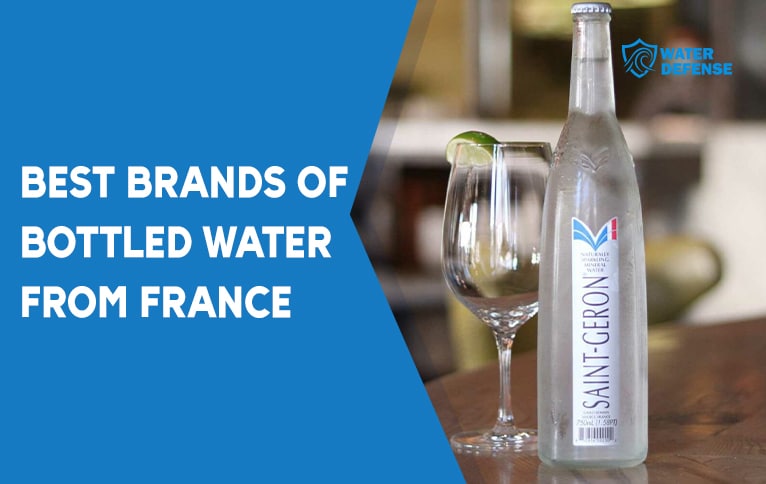
French Bottled Water Comparison
| French Water brand | Type | TDS | pH | Where to Buy |
|---|---|---|---|---|
| Evian | Mineral Water | 345 mg/L | 7.2 | Buy Now |
| Perrier | Mineral Water | 475 mg/L | 5.5 | Buy Now |
| La Sasse | Spring Water | 205 mg/L | n/a | – |
| Saint-Geron | Spring Water | 1,158 mg/L | n/a | – |
| 808 | Mineral Water | 246 mg/L | 7.6 | – |
What are the Best French Bottled Water Brands?
Evian
The United States Food and Drug Administration defines mineral water as spring water with more than 250 mg/L of total dissolved solids, which generally tastes too bitter. This is not the case with Evian.
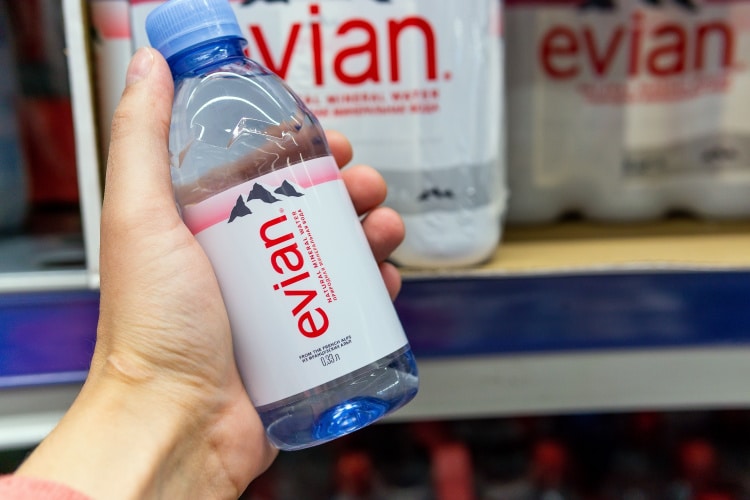
Although Evian’s total dissolved solids (TDS) count (345 mg/L) surpasses the set threshold, most people consume it as regular drinking water due to its pleasant taste, rich mineral content, and balanced pH value. This is an exceptionally unique trait for bottled water and why Evian is among the best in the world. It’s also the primary drinking water choice of many celebrities, influencers, and athletes.
Evian’s water originates from the French Alps. The water makes an underground journey of fifteen years through glaciers and other geological formations.
When it resurfaces in a spring nearby the town of Évian-les-Bains, it’s naturally cleansed of impurities and has an abundance of minerals. So, the brand doesn’t need to filter it or add minerals before bottling.
The water is exceptionally rich in calcium (78 mg/L) and magnesium (24 mg/L) compared to other spring water brands. However, its 14 mg/L of silica content negates the bitterness potential of calcium and magnesium, resulting in a fresh taste and relatively smooth texture. Its 7.2 pH value is neutral.
As the cherry on top, the brand is eco-conscious; it practices ethical, sustainable, and carbon-neutral production and makes an effort to raise awareness about the climate crisis.
Perrier
When Perrier entered the United States bottled water market in the 1970s, bottled water wasn’t very popular among Americans; as they were consuming chlorinated tap water. However, Perrier doubled down on marketing that targeted young urban professionals and showed the masses that there was more to water than just hydration: bottled water could also be a show of class, signify healthy living, and have a taste.
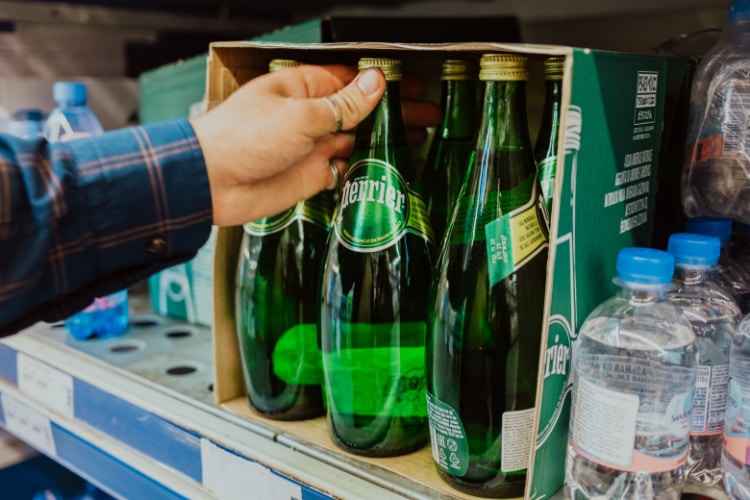
Of course, Perrier has a particular advantage over other mineral water brands, which could have played a role in its popularity. The brand’s mineral water has the lowest total dissolved solids levels (475 mg/L). Yet, it’s naturally carbonated.
In other words, it doesn’t taste as bitter as other mineral water brands with higher TDS counts, but it still gives that sparkling sensation. And it’s still electrolyte-rich since most of its mineral makeup consists of calcium (147 mg/L), which promotes bone health and helps our bodies maintain muscle function.
To ensure consistency in taste and carbonation, the brand collects its water and gas separately and then blend them carefully during bottling. Because of this, all Perrier bottles have a consistent pH of 5.5, putting the water among the most acidic on the market.
These factors combined explain why Perrier’s green glass bottles are now iconic.
La Sasse
The French Alps is the main feeder of the water springs in France, and the Mont Blanc Massif that feeds the spring of La Sasse is the highest point. The La Sasse spring and the water collection point are also on the highest point on the Mont Blanc Massif itself, at an altitude of 1,740 meters (5,708 feet). This is where the brand La Sasse collects its water, way before it gets near civilization.
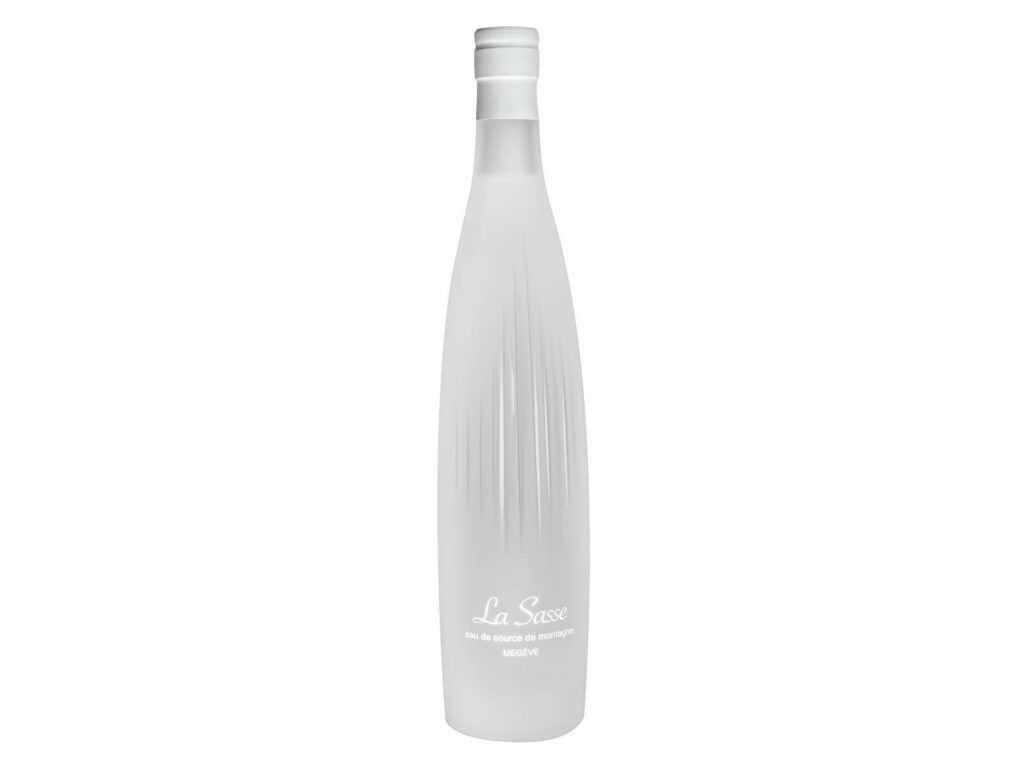
The collection isn’t complicated, as the water gushes out of shale stone and ice spectacularly. After a long journey through underground rock formations with natural cleansing properties, it has no impurities when it surfaces.
In addition, these formations are rich in minerals, but not so much that they make La Sasse mineral water. The final product has a TDS of only 205 mg/L, and its top mineral is calcium (76 mg/L). Yet, the water has an organoleptic quality and a sweetish taste that has won the brand several taste awards over the years.
Still, La Sasse’s most praiseworthy merit is its 74cl glass bottle designed by sculptor Pierre Margara. La Sasse comes in frosted glass bottles (reminiscent of high-end champagne) adorned with various simple lines. Margara also honors the shale stone from which the water emerges by depicting it on the bottle case.
Saint-Geron
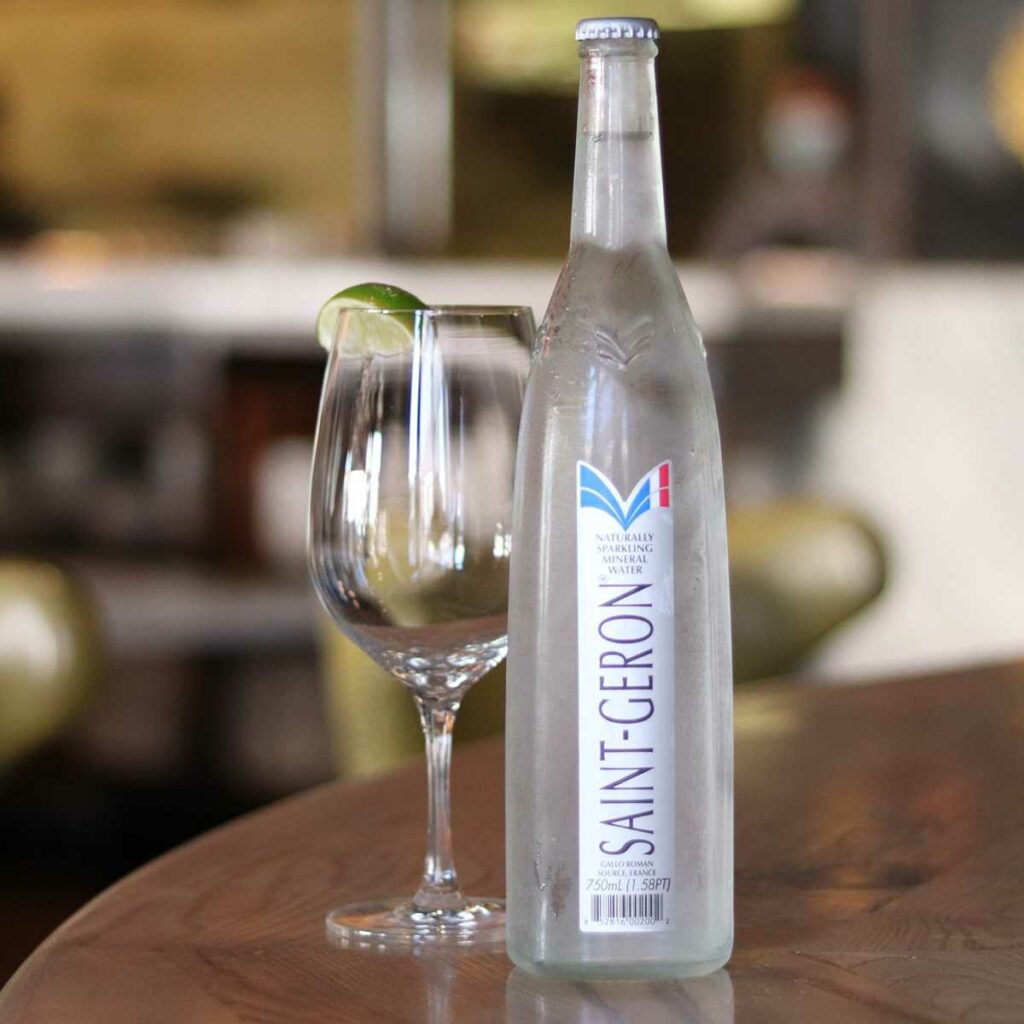
The Saint-Geron spring, located in the Clermont-Ferrand region of Auvergne, was widely used by locals in the Gallo-Roman Period. Back then, people believed that the water had medicinal properties, and they were not wrong. After the spring was rediscovered in the 1800s and its water was first bottled, Saint-Geron became one of France’s most popular mineral water brands due to its rich and balanced mineral content. Of course, its mineral makeup (rich in calcium, magnesium, and chloride) doesn’t miraculously cure people, but it makes the water a healthy choice for people with conditions like diabetes, digestion problems, and anemia.
The Clermont-Ferrand region of Auvergne is one of the most volcano-rich in Europe. While all the volcanos are now dormant, the water that passes through the volcanic geological formations in the area makes an epic voyage of 1,100 years, shedding its impurities and acquiring mineral salts.
Thus, when it emerges from the spring, it has 1,158 mg/L of total dissolved solids, the highest number of all the brands mentioned in this article. The electrolyte content is broken down below:
- Calcium: 79.1 mg/L
- Magnesium: 53.7 mg/L
- Potassium: 18.4 mg/L
- Silica: 28 mg/L
- Sulfate: 20.4 mg/L
- Chloride: 44.2 mg/L
Its relatively high silica content gives it a pleasant taste as well.
However, we should note that Saint-Geron is one of the most sodium-rich bottled water brands, with 225.5 mg/L of sodium. Bear that in mind if you have a cardiac condition, as sodium is a no-go for people with cardiac conditions.
808
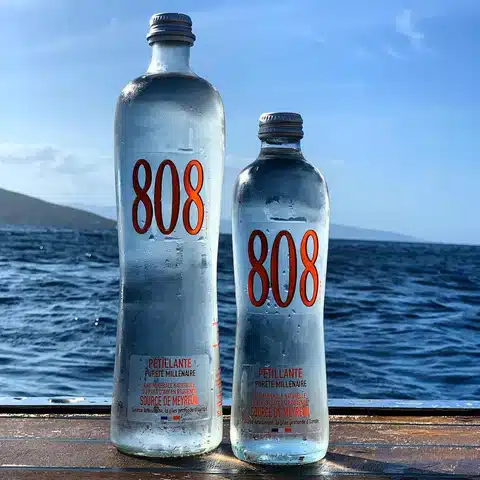
808 is a young brand founded only in 2019. Its water comes from the Sainte Victoire mountain in the Aix en Provence of southern France. The mountain is known for its lavender and thyme fields, but it’s also made of Urgonian limestone, which has natural water filtration capacities. It also has a unique mineral blend that dissolves into the underground waterways and leaches into the water as it passes through.
So, the water the brand collects through an artesian well with a depth of 808 meters (2,650 feet) — hence the name — is naturally pure and mineral-rich. When bottled, the water has 246 mg/L of total dissolved solids.
Similar to Saint-Geron, 808 has a balanced mineral makeup. The essential minerals in it (calcium, magnesium, and potassium) range between 10 mg/L and 40 mg/L. It also has 11 mg/L of silica and a balanced pH value of 7.6.
Thanks to its balanced makeup and pH, the water has a more or less neutral taste and smooth texture. What’s better, you can consume all the essential minerals at moderate levels by drinking 808.
Bottled Water from Other Countries
If you enjoy france bottled water, then you should definitely take a look at bottled water from other countries such as:
